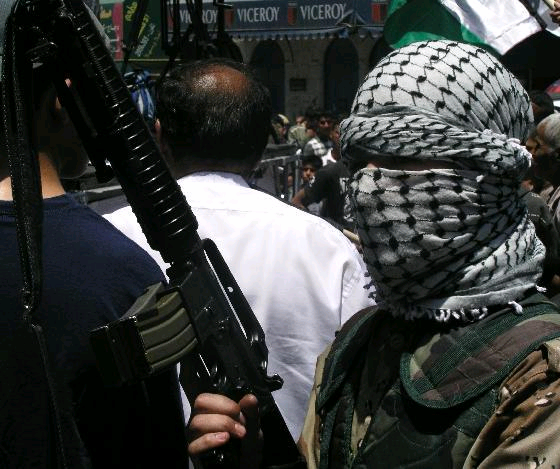By Yehudit Barsky – Three recent European terror attacks signal an alarming shift in the methods of foreign fighter training and indoctrination. They represent a third wave of terrorist preparation and call for new methods for dealing with them. The first wave of foreign fighters trained and fought against the Soviets in Afghanistan and founded al-Qaeda in the 1980s. This earliest incarnation of al-Qaeda was composed of foreign fighters from antisemitic radical Islamist movements from across the globe. They were attracted to Afghanistan to be trained to fight as jihadists on the Afghan side in the Soviet–Afghan War. Graduates of those camps returned to their home countries, including Europe and the United States, and served as trainers or catalysts for local Islamist terror cells in the 1990s. They also sought recruits for al-Qaeda. A second wave of foreign fighters came to al-Qaeda camps in Afghanistan in the 1990s and carried out the organization’s strategy of mega terror attacks in the early 2000s. Most infamously, they were responsible for carrying out the 9/11 attacks in New York and the Madrid and London train bombings in Europe. But also during that time, al-Qaeda operatives attacked synagogues in Turkey and Tunisia, as well as Jewish institutions in Morocco. As part of their pre-attack surveillance, they regularly chose Jewish facilities in addition to high-value targets, such as U.S. and Western facilities. Despite these mega attacks, some of al-Qaeda’s leaders perceived that its actions had failed to achieve their goal to incite the Muslim masses to fight against the United States. Al-Qaeda strategist Mustafa bin Abd al-Qadir Setmariam Nasar analyzed the post-9/11 situation and called upon jihadists to eliminate rigid organizational structures and take a localized approach. His strategy encouraged the establishment of local al-Qaeda groups and the creation of small cells that could operate independently on the ground and select their own targets. The three recent attacks in Europe demonstrate the maturation of this approach:
- Mehdi Nemmouche, the ISIS perpetrator of the 2014 Brussels Jewish Museum shootings, was radicalized in French prison and was known for radicalizing other prisoners. Nemmouche left France in 2012 to fight in Syria.
- Muhammad Merah, who declared himself an al-Qaeda operative, was responsible for the March 2012 murders of three Jewish children and a rabbi at a Jewish school, as well as three French paratroopers. Merah was radicalized in French prison and trained in 2009 at an al-Qaeda camp for foreign fighters in Miramshah in Waziristan, Pakistan.
- Amedy Coulibaly, a self-declared ISIS operative and perpetrator of the 2015 kosher supermarket attack in Paris, was radicalized in a French prison. While there, he found a way to contact Djamel Beghal, an Algerian al-Qaeda recruiter who was trained in camps in Afghanistan. Beghal was convicted of a plot to blow up the U.S. embassy in Paris. Coulibaly was indoctrinated by Beghal in prison and later trained by him in terrorist tradecraft after both men were released from prison in 2009.
These incidents exemplify the current security threats posed by foreign fighters against Jewish communal targets. They include local Islamist radicalization combined with antisemitic indoctrination; radicalized individuals who leave Western countries to acquire jihadist training; the return of trained individuals to their home countries; and their activation to carry out a jihadist attacks, specifically against local Jewish targets. The supermarket attack demonstrates yet another trajectory: radicalization and training that takes place in the homeland via the presence of a foreign fighter of the older generation. Over the past decade, foreign fighters were radicalized and attracted to al-Qaeda affiliates’ terrorist training camps in Syria, Yemen, Iraq, and Pakistan. In the past several years, they have been drawn to Syrian and Iraqi camps run by ISIS, al-Qaeda’s breakaway and competitor, al-Qaeda affiliate Jabhat al-Nusra, and its AQAP-led “Wolf Unit.” Radicalized Western Muslims, including Americans, have increasingly found their way to jihadist training camps, and the conflict in Syria has produced a war theater that is much more accessible and inviting to them. Syria’s proximity to Europe also means that larger numbers of foreign fighters will seek training there. There are some weaknesses in the chain of foreign fighter recruitment that can be exploited by law enforcement. The use of social media as a recruitment tool can be monitored, and the recruits’ impending travel and related activities can be noted by peers, family, and community members. Others, however, will not be caught. On a larger scale, governments need to enact policies concerning foreign fighters who return to their home countries to start the next wave of terrorist activities. Yehudit Barsky is a Middle East counterterrorism research analyst and a Research Fellow at the Institute for the Study of Global Antisemitism and Policy.

